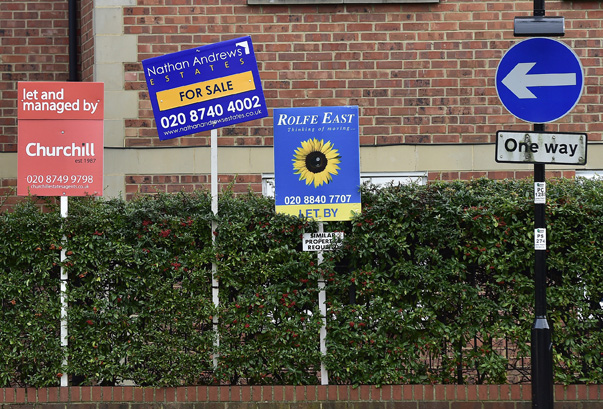Labour have been attacked from voices across the political spectrum after pledging to change the rules on private renting.
A Labour government would make three-year tenancies the norm and would stop landlords from raising the rent above CPI inflation for length of the tenancy.
Conservative ministers have queued up to denounce what they call “rent control” while voices from the left have criticised the plan as well.
But some of the facts have got lost in the shouting.
 “Too many people are struggling with the rising cost of renting…”
“Too many people are struggling with the rising cost of renting…”
Labour press release, 27 April 2015
It’s debatable whether this is a nationwide problem. ONS figures show rents across England went up by about 11.5 per cent between May 2010 and March 2015 – almost identical to the increase in CPI inflation over the same period.
There were significant real-terms increases in some areas like London, and alternative indices show higher prices rises across the country.
But official statistics suggest that the thing Labour wants – for rents to rise in line with inflation – has been happening anyway across England in the long-term.
 “Rent controls never work – they force up rents and destroy investment in housing.”
“Rent controls never work – they force up rents and destroy investment in housing.”
Conservative housing minister Brandon Lewis, 27 April 2015
Probably true but not necessarily relevant.
Economic theory does indeed suggest that artifically forcing landlords to charge lower-than-market rents can have unfortunate consequences.
Surveys of economists have shown that a majority think rent control reduces the quality and quantity of housing.
One influential US study found that investment rose 20 per cent when controls were removed in Massachussetts.
And British history shows that private renting grew quickly after widespread rent control was abolished in 1988.
Yesterday in a Telegraph article, Boris Johnson quoted approvingly the words of the Vietnamese foreign minister Nguyen Co Thach from 1989: “The Americans couldn’t destroy Hanoi, but we have destroyed our city by very low rents.”
But Labour are not suggesting that we follow an extreme model like the one adopted by the Communist government of post-war Vietnam, where rents were kept at 1 per cent of incomes.
The idea of tying private rents to some kind of index is in fact widespread across Europe and elsewhere, with rent rises often pegged to local rental price indexes or inflation in Germany, Canada, Norway, France, Spain and elsewhere.
This is “rent stabilisation” rather than rent control or rent freezing, and it’s pretty common – although not without its critics.
Housing expert Professor Christine Whitehead told us that in Germany, a country often cited as a good example for others to follow, landlords push for a high starting rate at the beginning of the tenancy, because they know they won’t be able to hike rents later.
The Labour plan if anything goes less far than the models popular in other countries, not all of them Communist.
Labour want to see tenancies rise to three years for most renters instead of six of 12 months, whereas in Germany, Denmark and the Netherlands among others lease agreements are indefinite and landlords can only evict for certain reasons.
 “In London, we are well on target now to deliver a record 100,000 new affordable homes over the life of this mayoralty.”
“In London, we are well on target now to deliver a record 100,000 new affordable homes over the life of this mayoralty.”
Boris Johnson, 26 April 2015
Technically true, but far from the whole story.
The mayor of London has actually missed the target he set himself of building 55,000 affordable homes between April 2011 and March 2015.
The latest figures show that just under 51,000 affordable homes were actually built in that period.
It is fair to say that Mr Johnson may well hit a separate target of building more than 100,000 affordable homes by the time he finishes his second term next year.
But that is 100,000 over eight years, or 12,500 a year. The mayor’s own housing strategy says London should be building about 25,000 affordable homes a year for the next 20 years to keep up wit demand.
Suggestions that the post-recession slump in housebuilding is now over should be taken with a pinch of salt.
Both Labour and the coalition like to accuse each other of presiding over the worst housebuilding figures since the 1920s. Both could be right, depending on which statistics you prefer.
Judged by how many homes were started in a particular year, Labour saw the worst figures in 2008/09. If you go by how many dwellings were completed, the low point came under the coalition, in 2012/13.
Both measures show that housebuilding is still well below pre-crash levels.





